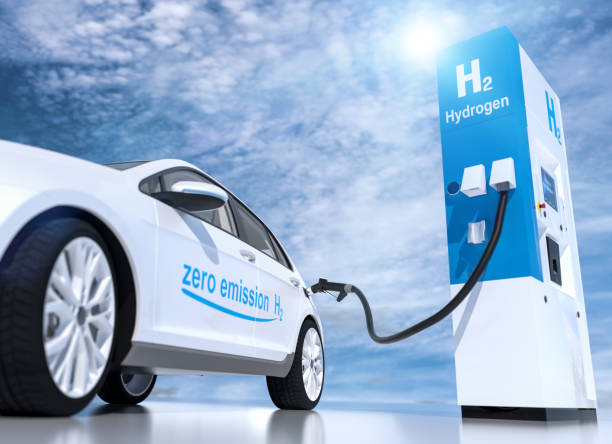Electric Aviation Takes Flight in Commercial Markets
The aviation industry stands at the threshold of a revolutionary transformation as electric aircraft transition from experimental prototypes to viable commercial solutions. This shift represents more than just technological advancement; it signals a fundamental reimagining of how we approach air transportation, logistics, and urban mobility. Electric aviation promises to address longstanding challenges in the industry, including environmental impact, operational costs, and accessibility to remote locations.

How Electric Technology Transforms Modern Aviation
Electric propulsion systems are revolutionizing aircraft design and performance capabilities. Unlike traditional jet engines that rely on fossil fuels, electric motors provide instant torque, reduced mechanical complexity, and significantly lower maintenance requirements. These systems enable precise control over power distribution, allowing for innovative aircraft configurations that were previously impossible with conventional propulsion methods.
The technology encompasses various approaches, from fully electric systems powered by advanced battery packs to hybrid configurations that combine electric motors with traditional engines. Battery energy density improvements and electric motor efficiency gains have reached critical thresholds that make commercial viability achievable for specific flight profiles and distances.
Sustainable Aviation Solutions for Environmental Impact
The environmental benefits of electric aviation extend beyond zero direct emissions during flight operations. Electric aircraft contribute to substantial reductions in noise pollution, making them particularly suitable for urban environments and noise-sensitive areas. The quiet operation opens possibilities for new flight paths and operational schedules that were previously restricted due to noise regulations.
Lifecycle environmental assessments show promising results when electric aircraft operate using renewable energy sources for charging. The elimination of combustion-related emissions at the point of use represents a significant step toward achieving aviation industry sustainability goals and meeting increasingly stringent environmental regulations worldwide.
Infrastructure Development for Electric Flight Networks
The deployment of electric aviation requires comprehensive infrastructure transformation across airports and landing facilities. Charging stations, power management systems, and specialized maintenance facilities must be developed to support electric aircraft operations. This infrastructure buildout presents both challenges and opportunities for airports seeking to modernize their capabilities.
Power grid integration becomes crucial as electric aircraft operations scale up. Airports must coordinate with utility providers to ensure adequate electrical capacity and implement smart charging systems that optimize energy usage during peak and off-peak periods. Battery swapping stations and rapid charging technologies are being explored to minimize aircraft downtime between flights.
Urban Mobility and Smart Transportation Systems
Electric vertical takeoff and landing aircraft represent a paradigm shift in urban transportation planning. These vehicles promise to alleviate ground traffic congestion by utilizing three-dimensional airspace for passenger and cargo movement. Urban air mobility networks could connect airports, business districts, and residential areas with unprecedented efficiency.
Integration with existing transportation systems requires sophisticated traffic management and coordination protocols. Smart city initiatives increasingly incorporate electric aviation as a component of comprehensive mobility solutions that combine ground-based and aerial transportation modes to optimize overall system performance.
Autonomous Flight Systems and Operational Efficiency
Autonomous flight capabilities are being developed alongside electric propulsion systems to maximize operational efficiency and safety. Advanced flight control systems, artificial intelligence, and sensor technologies enable precise navigation and collision avoidance in complex airspace environments. These systems reduce pilot workload and enable new operational models for cargo delivery and passenger transportation.
The combination of electric propulsion and autonomous systems creates opportunities for distributed logistics networks that can operate with minimal human intervention. This automation potential makes electric aviation particularly attractive for applications such as medical supply delivery, emergency response, and remote area connectivity.
| Aircraft Type | Provider | Range (miles) | Cost Estimation |
|---|---|---|---|
| eVTOL Aircraft | Joby Aviation | 150 | $200,000-500,000 |
| Electric Commuter | Eviation Aircraft | 250 | $2-4 million |
| Cargo Drone | Zipline | 50 | $100,000-300,000 |
| Air Taxi | Lilium | 175 | $3-7 million |
Prices, rates, or cost estimates mentioned in this article are based on the latest available information but may change over time. Independent research is advised before making financial decisions.
Future Innovation and Connectivity Solutions
The future of electric aviation extends beyond current technological capabilities to encompass revolutionary concepts such as distributed electric propulsion, advanced battery chemistries, and hybrid-electric systems. Research initiatives focus on increasing energy density, reducing charging times, and improving overall system reliability for commercial operations.
Connectivity between electric aircraft and ground-based systems enables real-time optimization of flight paths, energy consumption, and maintenance scheduling. These integrated networks promise to deliver unprecedented levels of operational efficiency while maintaining the highest safety standards required for commercial aviation operations.
Electric aviation represents a transformative force that will reshape the transportation industry over the coming decades. As technology continues to mature and infrastructure develops, electric aircraft will become increasingly integrated into our daily transportation networks, offering cleaner, quieter, and more efficient alternatives to traditional aviation solutions.





